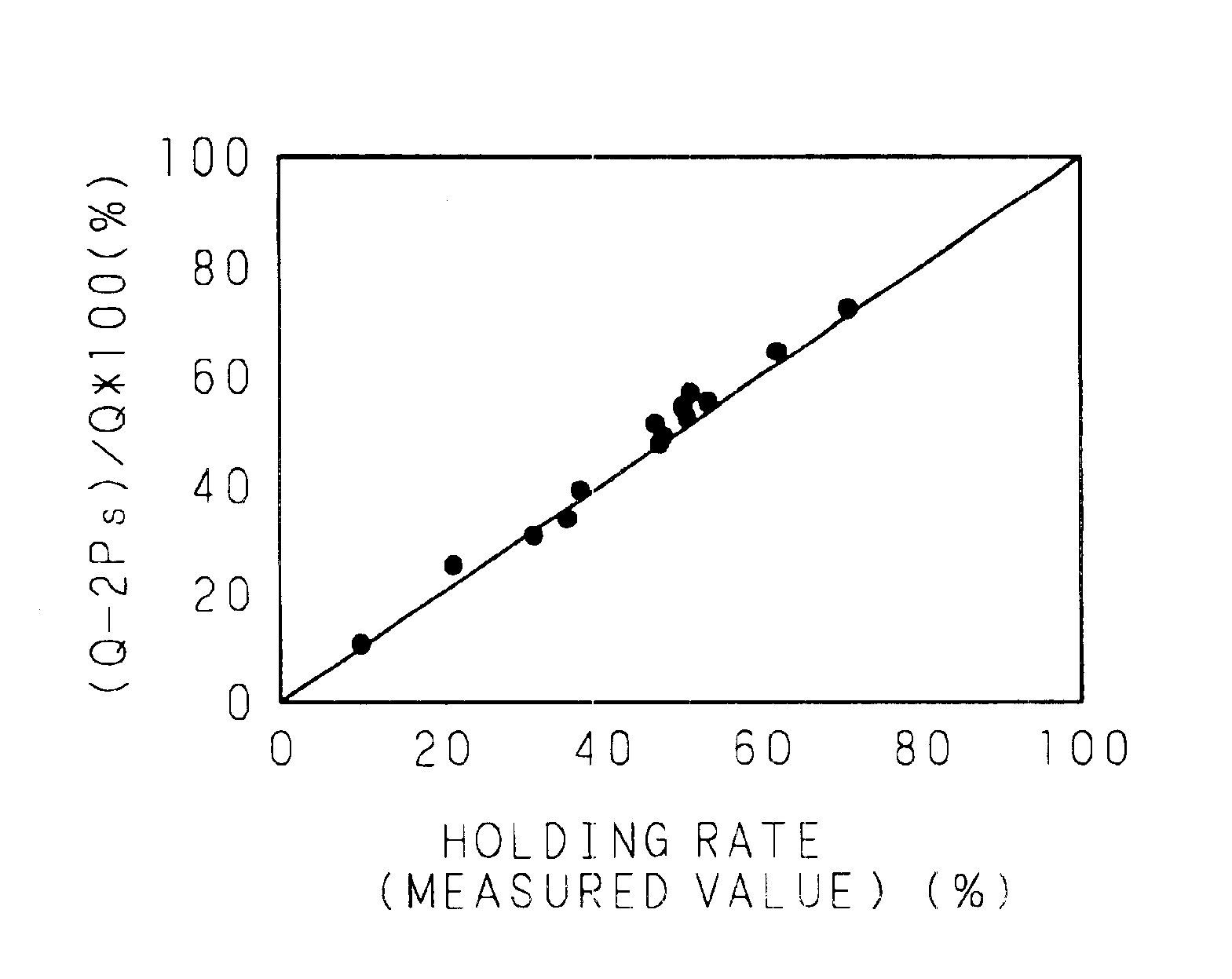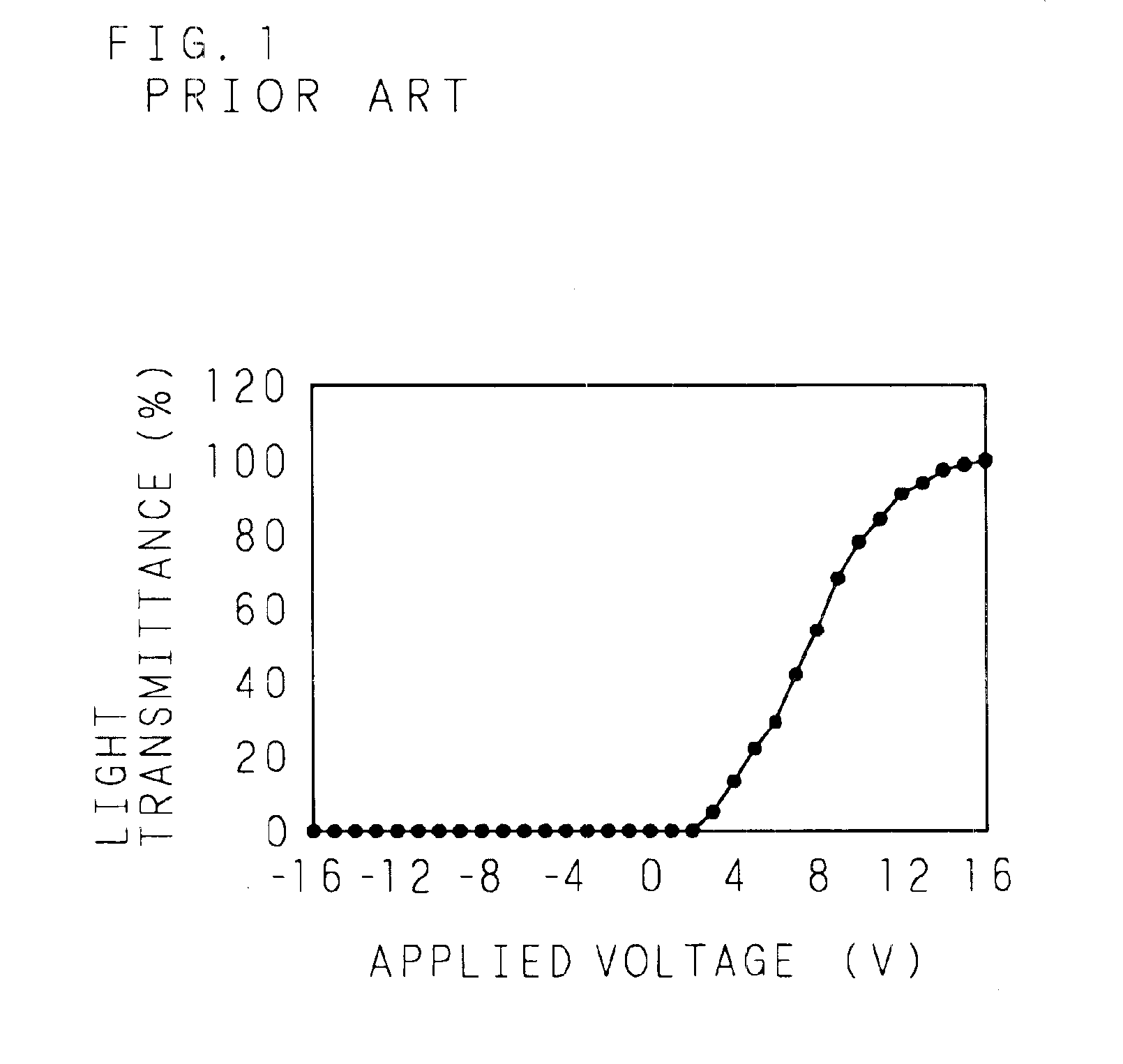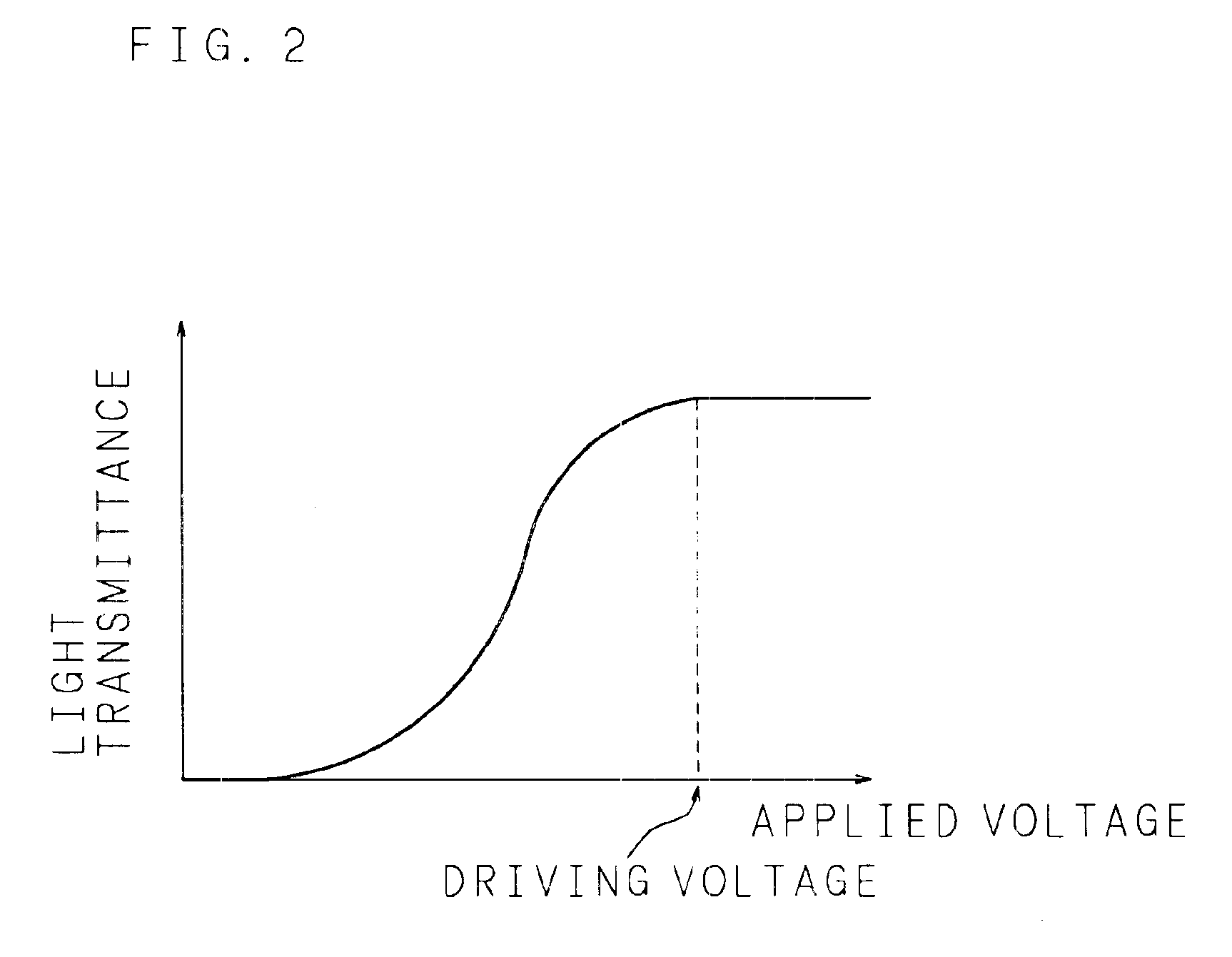Liquid crystal display having a spontaneous polarization
a liquid crystal display and spontaneous polarization technology, applied in liquid crystal compositions, instruments, chemistry apparatus and processes, etc., can solve the problems of slow response speed, unsuitable display devices for personal computers, and unsuitable for animation pictures
- Summary
- Abstract
- Description
- Claims
- Application Information
AI Technical Summary
Benefits of technology
Problems solved by technology
Method used
Image
Examples
example 1
[0061]In Example 1, the ferroelectric liquid crystal sealed in the liquid crystal panel has relative dielectric constant of approximately 6 and a magnitude of the spontaneous polarization of 13.5 nC / cm2.
[0062]Then, a voltage was applied to the liquid crystal through the switching element of the TFT 11 so that the applied voltage and the light transmittance were measured. Consequently, as shown in FIG. 7, the light transmittance varied in proportion to the applied voltage and came to be saturated at approximately 10 V. Therefore, the liquid crystal display of the present example can be driven by using a liquid crystal driver IC of an output voltage of ±10 V.
[0063]Here, in the case when a voltage of 10 V was applied during the ON-state of the switching element, the quantity of charge injected to each pixel was 29 nC / cm2.
[0064]Next, an explanation will be given of the displaying operation of the liquid crystal display of the present invention in accordance with Example 1. In the liquid...
example 2
[0067]In Example 2, the ferroelectric liquid crystal sealed in the liquid crystal panel has a relative dielectric constant of approximately 6 and a magnitude of the spontaneous polarization of 8.2 nC / cm2.
[0068]Then, a voltage was applied to the liquid crystal through the switching element of the TFT 11 so that the applied voltage and the light transmittance were measured. Consequently, as shown in FIG. 8, the light transmittance varied in proportion to the applied voltage and came to be saturated at approximately 6.5 V. Therefore, the liquid crystal display of the present example can be driven by using a liquid crystal driver IC of an output voltage of ±7 V.
[0069]Here, in the case when a voltage of 6.5 V was applied during the ON-state of the switching element, the quantity of charge injected to each pixel was 19.7 nC / cm2.
example 3
[0070]In Example 3, the ferroelectric liquid crystal sealed in the liquid crystal panel has a relative dielectric constant of approximately 5 and a magnitude of the spontaneous polarization of 6.3 nC / cm2.
[0071]Then, a voltage was applied to the liquid crystal through the switching element of the TFT 11 so that the applied voltage and the light transmittance were measured. Consequently, as shown in FIG. 9, the light transmittance varied in proportion to the applied voltage and came to be saturated at approximately 5 V. Therefore, the liquid crystal display of the present example can be driven by using a liquid crystal driver IC of an output voltage of ±5 V.
[0072]Here, in the case when a voltage of 5 V was applied during the ON-state of the switching element, the quantity of charge injected to each pixel was 14 nC / cm2.
PUM
| Property | Measurement | Unit |
|---|---|---|
| relative dielectric constant | aaaaa | aaaaa |
| light transmittance | aaaaa | aaaaa |
| relative dielectric constant | aaaaa | aaaaa |
Abstract
Description
Claims
Application Information
 Login to View More
Login to View More - R&D
- Intellectual Property
- Life Sciences
- Materials
- Tech Scout
- Unparalleled Data Quality
- Higher Quality Content
- 60% Fewer Hallucinations
Browse by: Latest US Patents, China's latest patents, Technical Efficacy Thesaurus, Application Domain, Technology Topic, Popular Technical Reports.
© 2025 PatSnap. All rights reserved.Legal|Privacy policy|Modern Slavery Act Transparency Statement|Sitemap|About US| Contact US: help@patsnap.com



